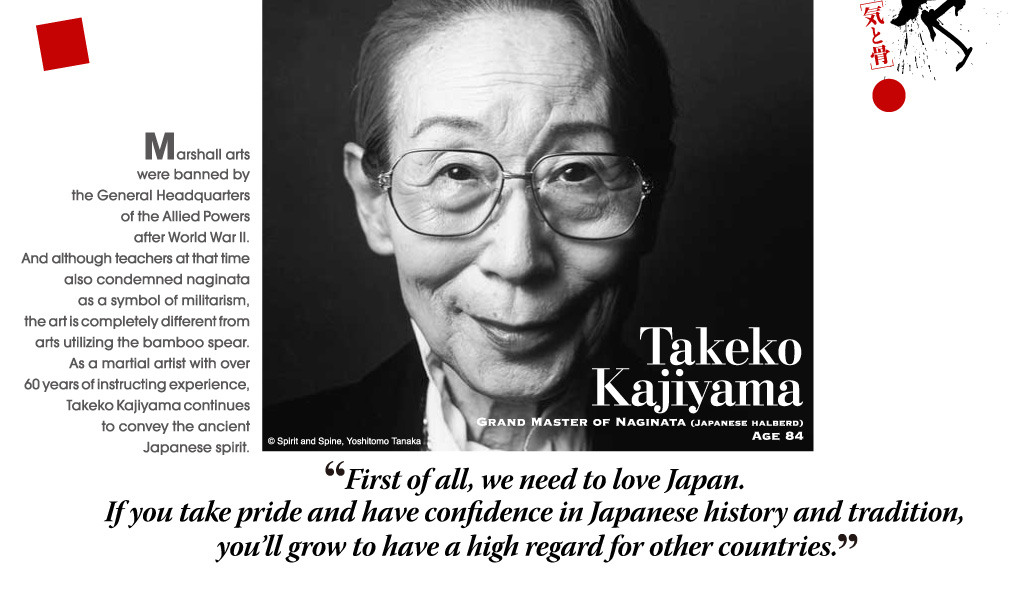In the modern martial arts training hall, dozens of women hold up their naginatas and at the ready. Naginata grand master Takeko Kajiyama, who has been practicing the art for 80 years, instructs the lesson. At her command, the long poles, headed by a curving sword, slice through the air in a unison of arcs and straight lines to then come to a dead stop in complete harmony.
Takeko was adopted by request at the age of three. Her foster father ran a dojo, regarded as one of three major kendo dojos of pre-World War II Japan. Takeko was soon engaged in naginata training under the guidance of a well-known grand master. However, the dojo burned down in an air raid toward the end of the war, and so the young Takeko greeted post war Japan as a simple school girl. She wept over the loss of martial arts implements thrown into fires at her school. Her career as a successor of the renowned dojo seemed to be lost to the severity of the times.
But several years later Takeko was asked to begin giving lessons at the Kamakura Police Station. Class membership gradually increased, and, together with her senior grand master, they made concerted efforts to establish the Kanagawa Naginata Federation, following up with the All Japan Naginata Federation. After that, Takeko relocated to Meguro, Chofu and Tama where she began naginata classes and gave lessons to both girls and adult women, leading them to the acquisition of certifications.
She is well respected as a master because she is a highly disciplined person herself who gives first priority to the growth and prosperity of the entire naginata circle over the various schools. Takeko has committed herself to the work of conveying to future generations the history and traditions she inherited from her masters and teachers and does so with a resolute and beautiful demeanor.







































































































